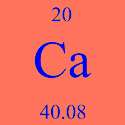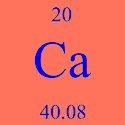Getting the calcium you need
Following the first Bose-Einstein condensation (BEC) of ultracold rubidium atoms in 1995, researchers have set about conquering the rest of the periodic table. Different atomic species have different useful traits, such as narrow linewidths or resistance to perturbation by external electric and magnetic fields, characteristics advantageous for applications such as precision measurements or atomic clocks. Now, as Sebastian Kraft, Felix Vogt, Oliver Appel, Fritz Riehle, and Uwe Sterr at the Physikalisch-Technische Bundesanstalt, Braunschweig, Germany, report in Physical Review Letters, a member of another large and important class of atoms—the alkaline earths—has been cooled to form a BEC.
Alkaline earths are elements in Group II of the periodic table and are marked by weak, highly forbidden energy level transitions, which means the linewidths are quite narrow and useful for precision measurements. Kraft et al. used a series of magneto-optical traps to cool calcium- down to a temperature of , after which the calcium atoms were evaporatively cooled to to form a BEC. Their trapping techniques were able to overcome the collisional losses caused by the very large scattering length of calcium that defeated previous attempts to create a BEC. With alkaline earth atoms added to the trophy case, the combination of narrow linewidths and the coherent matter waves possible with BEC should push the envelope of quantum information studies and high-precision metrology. – David Voss





